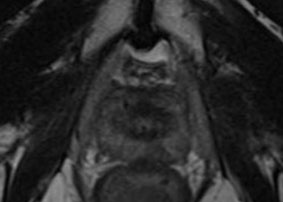
Multiparametric, 3 Tesla, prostate MRI (mpMRI) consists of a precise combination of imaging sequences used to screen for prostate cancer. Findings on each imaging sequence are scored, enabling determination of an overall PI-RADS category, utilized to determine the likelihood of the presence of clinically significant prostate cancer.
Imaging sequences include:
T2-weighted images
Diffusion weighted imaging (DWI)
Dynamic contrast-enhanced imaging (DCE)
Based on the number of points obtained in each category, a PI-RADS Score is determined..
State-of-the-art prostate MRI is multiparametric (mpMRI), meaning that anatomic as well as functional characteristics of lesions are considered and result in a lesion
score indicative of the likelihood of prostate cancer. A 5-point scale is utilized, to relay the probability of malignant disease:
PI-RADS TM V2.1 Assessment Categories
PI-RADS 1 - Very low (clinically significant cancer is highly unlikely to be present)
PI-RADS 2 - Low (clinically significant cancer is unlikely to be present)
PI-RADS 3 - Intermediate (the presence of clinically significant cancer is equivocal)
PI-RADS 4 - High (clinically significant cancer is likely to be present)
PI-RADS 5 - Very high (clinically significant cancer is highly likely to be present)
Clinically significant cancer is defined as histologically proven Gleason score of greater than or equal to 7 (including 3 + 4, with prominent but not predominant Gleason 4 component), and/or volume greater than or equal to 0.5cc, and/or extraprostatic extension .